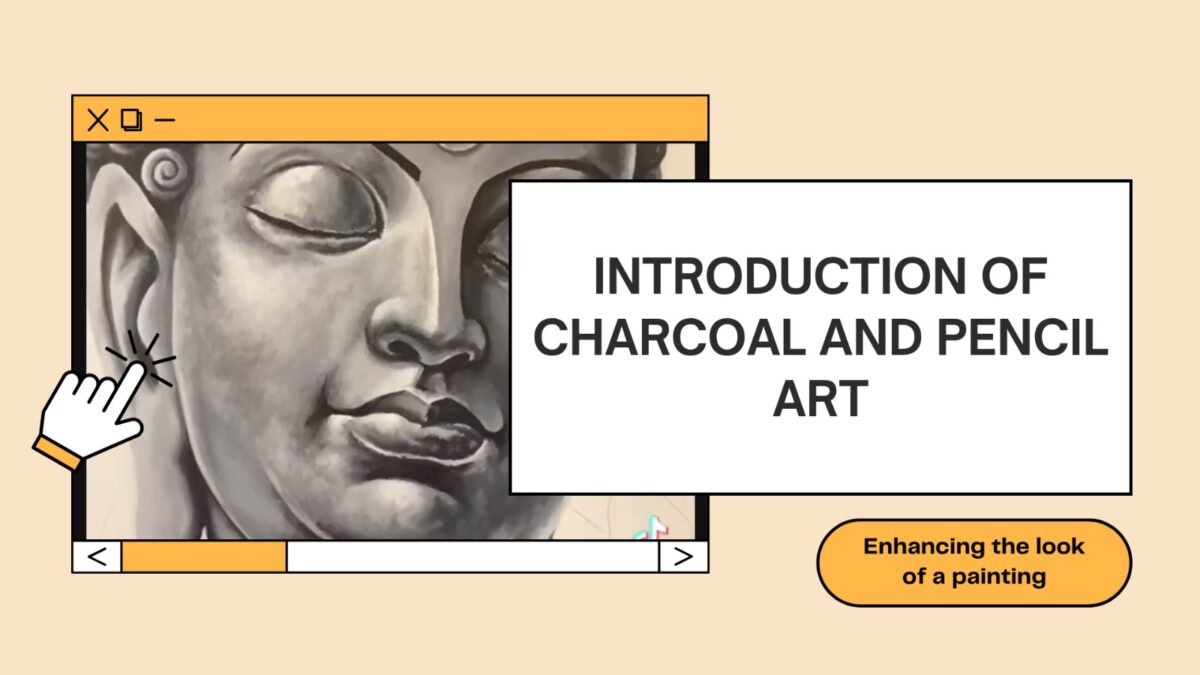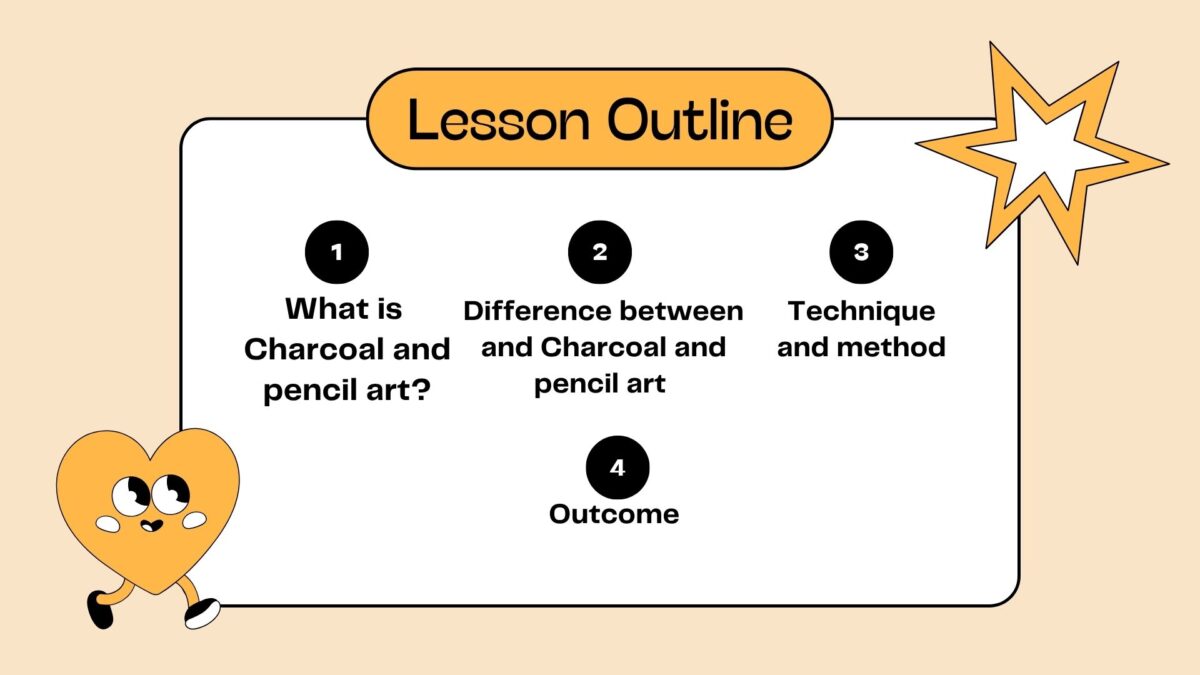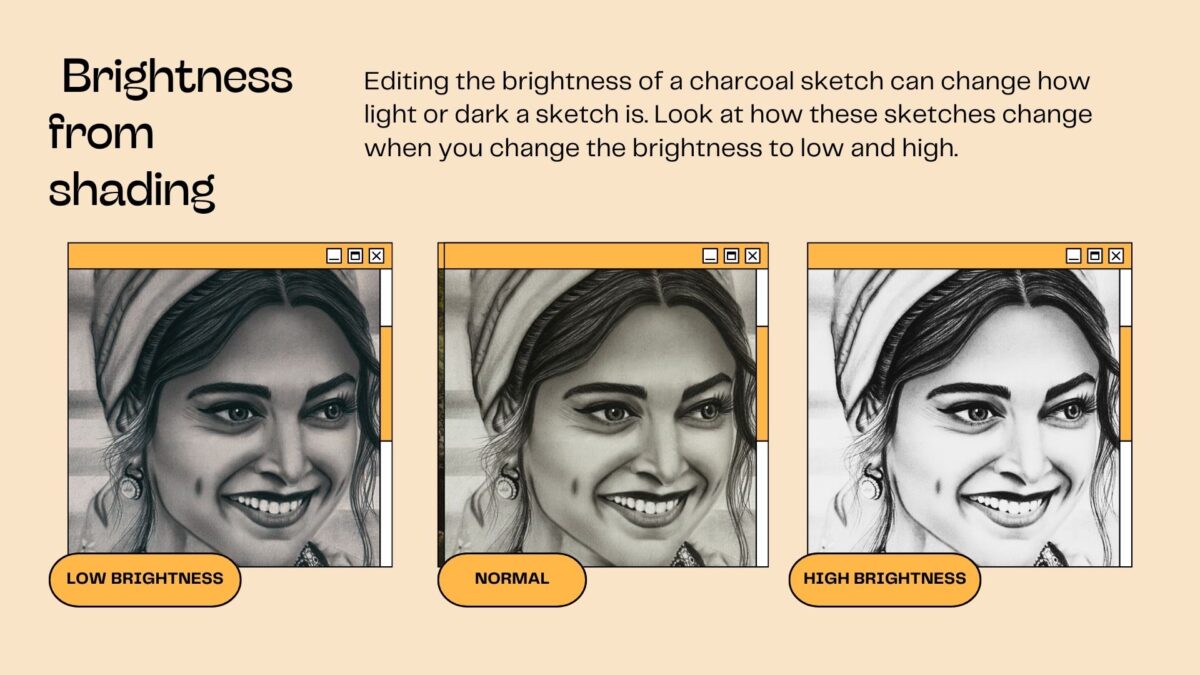Charcoal art is a classic drawing method that uses charred wood to make rich, monochrome images. It’s known for its ability to create strong contrasts and smooth gradients, making it ideal for everything from quick sketches to detailed, emotional pieces. Artists appreciate charcoal for its soft texture and the ease with which it captures depth, form, and expression.


Pencil Art:
Pencil art is created using graphite pencils, which are known for their ability to produce fine details and smooth shading. Artists can choose from various pencil types—some make lighter lines, while others give darker tones. It’s clean, easy to handle, and ideal for realistic drawings, portraits, and precise sketching.
Charcoal Art:
Charcoal art is made with charcoal sticks or pencils crafted from burned wood. It gives deep blacks and bold contrast, making it perfect for dramatic and expressive artwork. Charcoal is easy to smudge and blend, which helps in shading, but it can be messy and usually needs a fixative spray to keep the drawing in place.
Differences bitween charcoal and pencil art
| Feature | Charcoal Art | Pencil Art |
|---|---|---|
| Medium | Burnt wood, vine/compressed | Graphite in wood casing |
| Tone | Deep black, high contrast | Range from light gray to dark gray |
| Texture | Rough and grainy | Smooth |
| Detailing | Less precise | Highly precise and clean |
| Blending | Very easy | Moderate |
| Smudging | High | Low |
| Fixative Needed | Yes | Usually not |
| Style | Expressive, dramatic | Controlled, realistic |
Technique and method
Charcoal:
Blends easily with fingers, stumps, or tissues.
→ You can smooth and spread charcoal effortlessly using your fingers, blending stumps, or soft tissues to create soft shading and transitions.Erases less cleanly, and needs a fixative to prevent smudging.
→ It’s hard to erase charcoal completely, and because it smudges easily, a fixative spray is often used to protect the artwork from smearing.Often used in gesture, figure drawing, and expressive portraits.
→ Charcoal is commonly chosen for quick sketches of movement, human figures, and emotion-filled portraits due to its bold, fluid style.Requires a looser, more fluid hand.
→ When drawing with charcoal, artists usually work with free, relaxed strokes, making it better suited for expressive or dynamic drawing styles.
Pencil:
Allows for detailed line work and fine control.
→ Pencils are ideal for precise, sharp lines and offer better control for small details in a drawing.Easy to erase and adjust.
→ Mistakes made with pencil can be easily corrected, making it a forgiving medium for changes or edits.Commonly used in technical sketches, portraits, and realistic drawings.
→ Pencil is widely used in accurate illustrations, detailed portraits, and realistic artwork where clarity and control matter.Layering and cross-hatching are key techniques.
→ Techniques like building up layers of graphite or using crossed lines (cross-hatching) are often used to create depth and texture.
